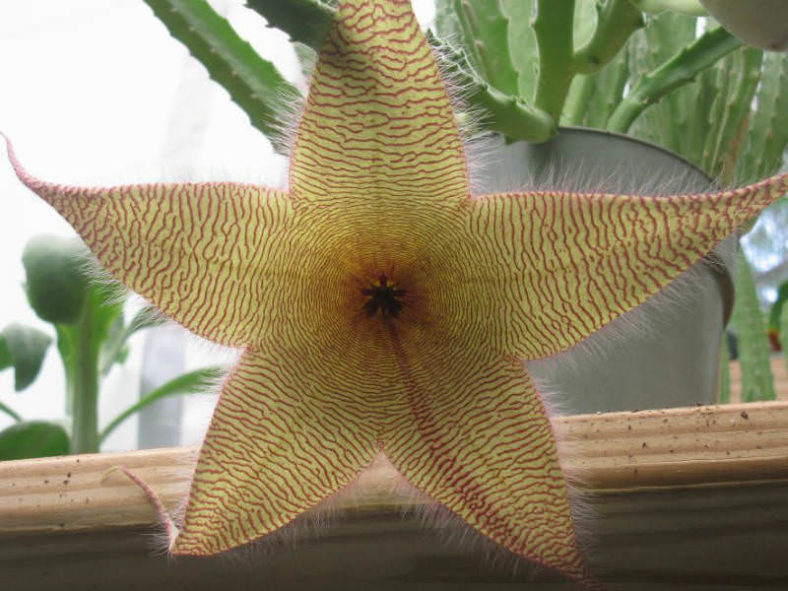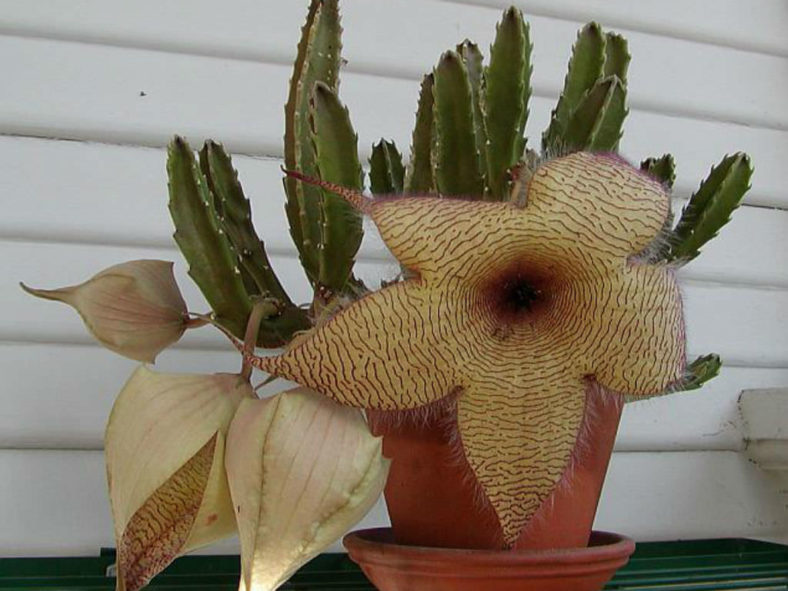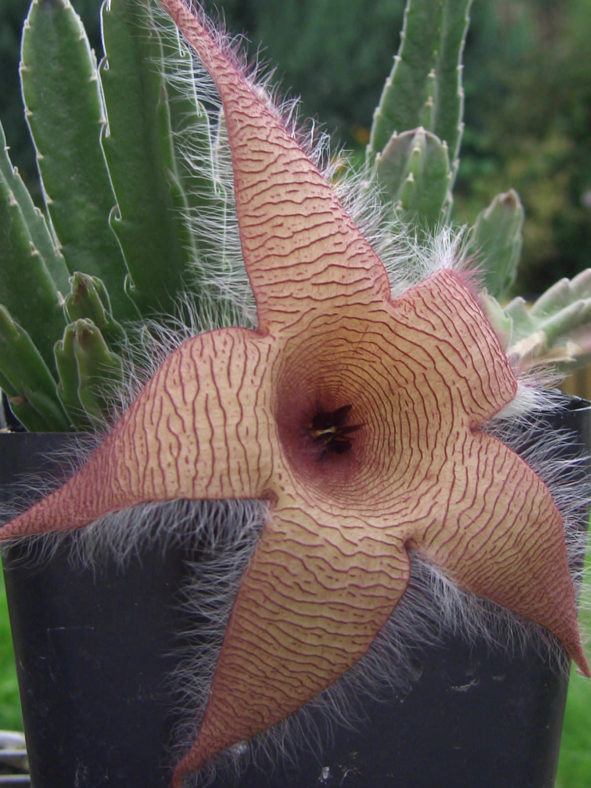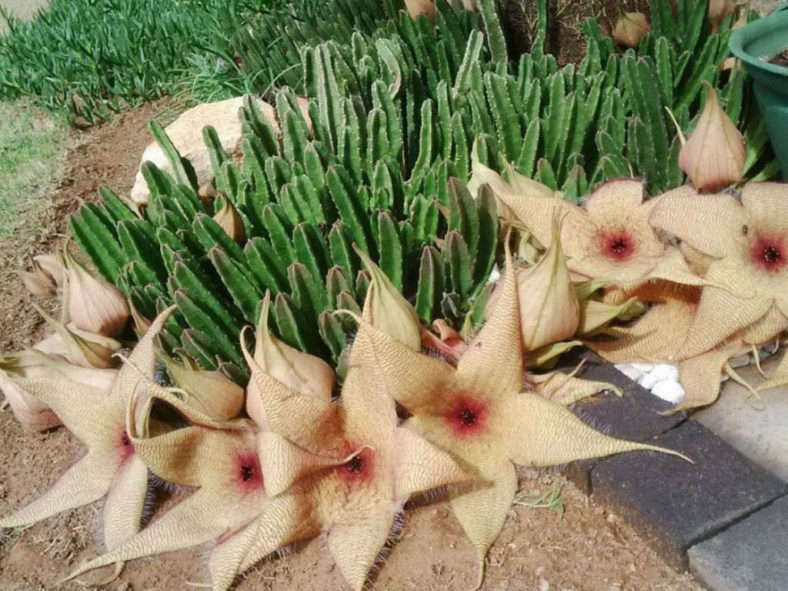Scientific Name
Stapelia gigantea N. E. Br.
Common Name(s)
Carrion Flower, Carrion Plant, Giant Toad Plant, Starfish Flower, Starfish Plant, Toad Plant, Zulu Giant
Synonym(s)
Ceropegia gigantea, Gonostemon giganteus
Scientific Classification
Family: Apocynaceae
Subfamily: Asclepiadoideae
Tribe: Stapeliae
Genus: Stapelia
Description
Stapelia gigantea is a spineless succulent with 4-angled multi-branched stems and large star-shaped flowers. If grown in the ground, it can grow up to 1 foot (30 cm) tall and spread up to 3.3 feet (1 m). The green stems are initially upright but tend to become more scrambling, with only the tip growing upright.
The star-shaped flowers have five pale yellow lobes with transverse maroon lines and are fringed with long hairs. The maroon lines become more closely spaced towards the center of the flower, and maroon coloration may prevail in this region. The flowers can reach up to 14 inches (35 cm) in diameter and appear in the fall.

Hardiness
USDA hardiness zones 9a to 11b: from 20 °F (−6.7 °C) to 50 °F (+10 °C).
How to Grow and Care
Several species are relatively easy to grow. Others, often those with slightly hairy stems and the more unusual flowers, are more challenging and require careful watering (with some fertilizer) during the growing season and complete water withdrawal during the winter months. A minimum winter temperature of 10°C (50°F) is acceptable, providing plants are kept absolutely dry. A heated growing bench or incubator may help delicate plants get through the colder months. However, many species live under shrubs in their habitat and prefer light shade rather than full sun.
A gritty succulent soil mix is essential, and clay pots are advisable for the more delicate species. Some growers prefer mineral-only soil to minimize the chance of a fungal attack on the roots. A layer of grit on the soil's surface prevents moisture from accumulating around the stems' base.
Keeping Stapelias and their roots free of pests such as mealybugs is the real key to success, as fungal attack often occurs due to damage to stems by insects.
Learn more at How to Grow and Care for Stapelia.
Origin
Stapelia gigantea is native to southeastern Africa (Zambia, Malawi, Mozambique, Botswana, Zimbabwe, and South Africa).
Links
- Back to genus Stapelia
- Succupedia: Browse succulents by Scientific Name, Common Name, Genus, Family, USDA Hardiness Zone, Origin, or cacti by Genus
Photo Gallery
Click on a photo to see a larger version.



